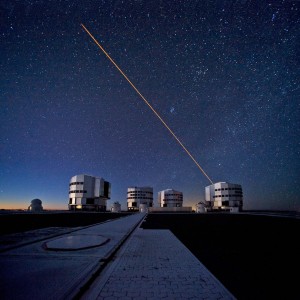
International astronomers study the absence of Lithium beyond our galaxy
There is a crucial question that from the 1980s has many astronomers around the world on the edge. Where is the Lithium(Li) that released the Big Bang? According to this theoretical model, after the first outbreak, mainly three elements were produced by our Universe: hydrogen, helium and lithium. Evidence of the strong presence of the two first elements in the Universe has been found. However, observations have yielded less concentration of Li which in theory should exist in the stars.
A team of international researchers, led by Alessio Mucciarelli (University of Bologna, Italy), together with Maurizio Salaris (Liverpool John Moores University, UK), PierCarlo Bonifacio (Observatoire de Paris, France), Lorenzo Mónaco (ESO, Santiago, Chile) and Sandro Villanova (Universidad de Concepción) have observed, for the first time, this phenomenon outside our galaxy.
Until now it had only been possible to search into stars within our Galaxy, but this time they have look into the globular cluster Messier 54, located in the Sagittarius dwarf spheroidal galaxy (nearby the Milky Way) thanks to data obtained from ESO Very Large Telescope (Paranal Observatory), “Previously, a type of star not too bright was observed because we were limited by the proximity of the Sun, we couldn’t go beyond ~50,000 light-years. In this case, we observe to ~100,000 light-years away in this cluster of Sagittarius, then we can reach the galaxies that are in the vicinities of the Milky Way” says Dr. Sandro Villanova, astronomer from Universidad de Concepción.
With this project, it was demonstrated that the lithium discrepancy not only affects the Milky Way, but also to extra-galactic systems and can be extrapolated to the rest of the Universe. As often happens in science, this search for answers, led to many other questions. “The Big Bang theory predicts a quantity of lithium three times higher than what we found, and this is the first time that it has been proven that it is a universal problem, not just a local one (of our Milky Way). So maybe, there is a problem in the model of the first minutes or millions of years of life of the Universe, when this lithium deficiency occurred. How was it produced? It is still unknown” adds S. Villanova.
The investigation corresponds to the paper ‘The cosmological Lithium problem outside the Galaxy: the Sagittarius globular cluster M54’, published in the refereed journal Monthly Notices of the Royal Astronomical Society. Mucciarelli et al. 2014, MNRAS, 444, 1812-1820





